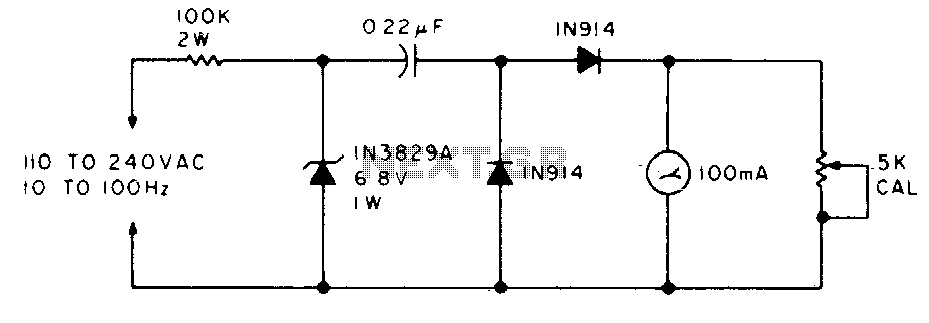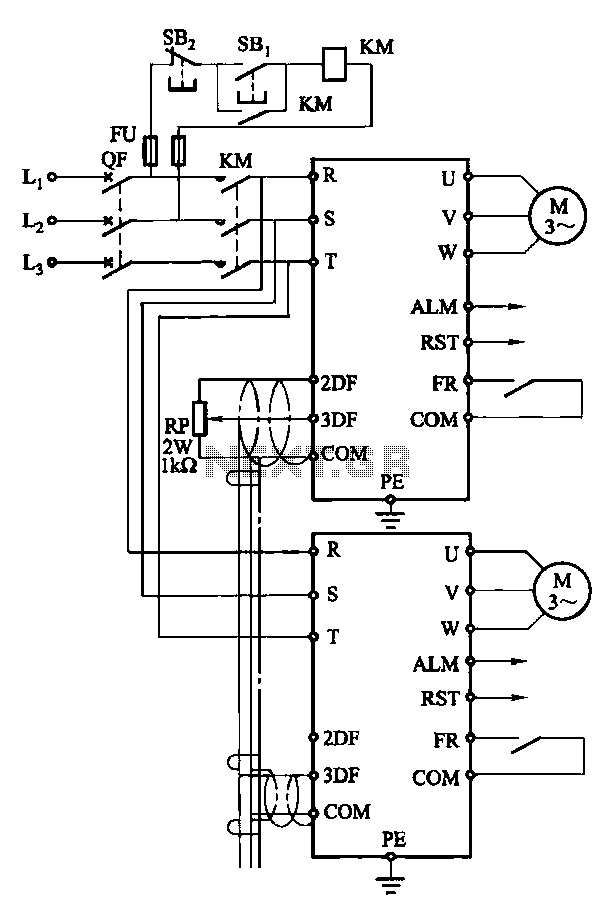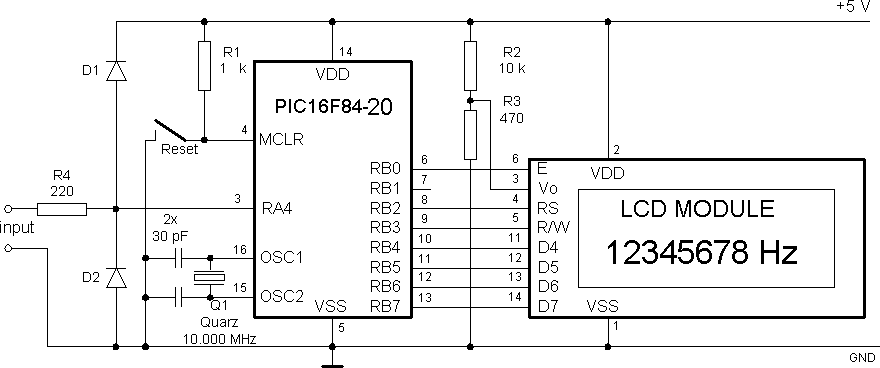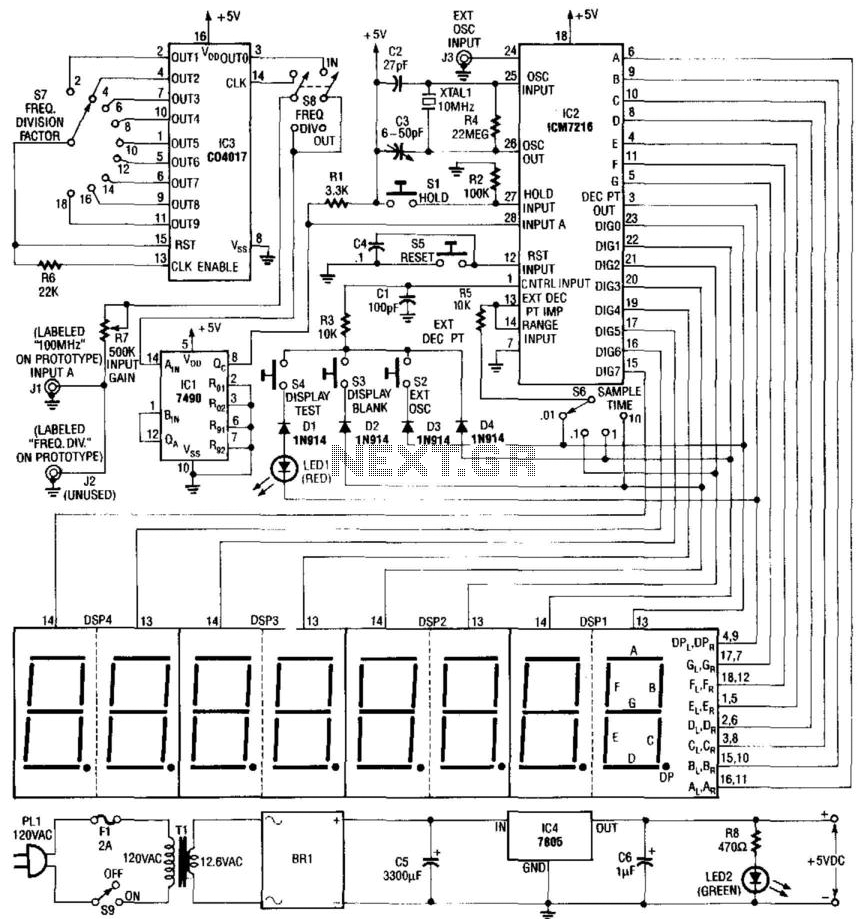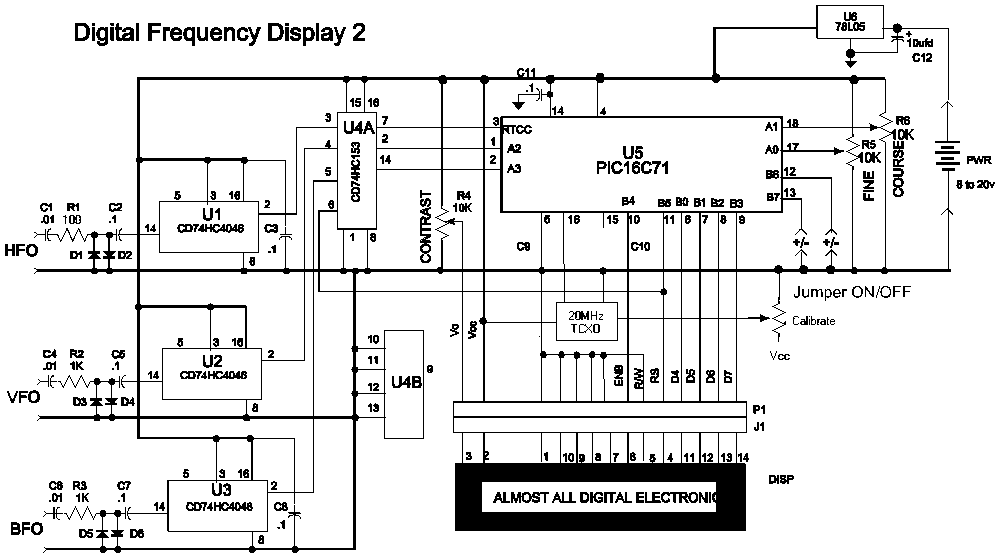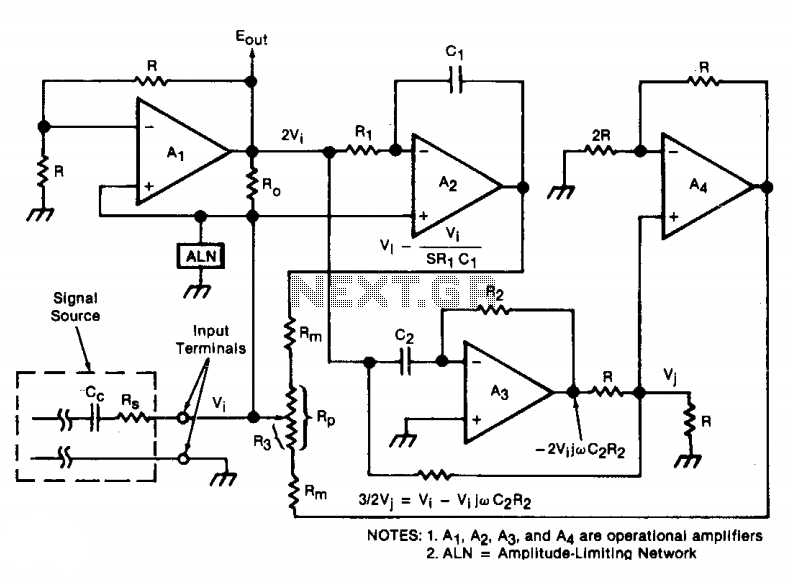
NE566 frequency modulator

A frequency modulator utilizing the NE566 integrated voltage-controlled oscillator is depicted in the provided figure. When the DC potential at the signal input terminal is fixed, a constant frequency oscillation cycle is established. By varying the input terminal potential, the output frequency of the integrated circuit (IC) changes in accordance with the frequency modulation circuit. The component parameter reference values in the figure indicate that when the resistances are set to Ri = R2 = 100 Ω and Rd = 10 kΩ with RP2 set to 50 kΩ, the output frequency can vary approximately 40 kHz in response to changes.
The NE566 integrated circuit operates as a voltage-controlled oscillator (VCO), allowing for frequency modulation based on the input voltage. The configuration presented enables the generation of a frequency-modulated signal, where the output frequency is directly influenced by the input voltage levels.
In this circuit, Ri and R2 serve as the timing resistors that help determine the oscillation frequency. The resistor Rd is connected to the timing capacitor, which influences the charge and discharge cycles, further affecting the output frequency. The variable resistor, RP2, plays a crucial role in fine-tuning the output frequency and can be adjusted to achieve the desired modulation characteristics.
When the input terminal potential is altered, the NE566 responds by adjusting the oscillation frequency, which is a fundamental aspect of frequency modulation. This allows the circuit to be used in various applications, including communication systems where the frequency of the transmitted signal must be modulated in response to the input signal variations.
The output frequency can be monitored and measured using an oscilloscope or frequency counter to ensure it aligns with the expected modulation range. The design can be expanded with additional components, such as filters or amplifiers, to enhance performance and signal integrity, depending on the specific application requirements. Overall, the NE566 frequency modulator is a versatile component in electronic circuits, providing reliable frequency modulation capabilities.A frequency modulator configured NE566 integrated voltage-controlled oscillator shown in FIG. When the signal input terminal potential DC position, forming a cycle of constant frequency oscillation; change input terminal potential, IC output frequency of the frequency modulation circuit changes accordingly. FIG component parameter reference value, when the resistance: Ri - R2 - lOOfl. Rd - lOkZRP2 - when 50kfl, 20 to the output frequency can be about a corresponding change in 40kHz; RP2 or change the value of G, the output frequency changes accordingly.
The NE566 integrated circuit operates as a voltage-controlled oscillator (VCO), allowing for frequency modulation based on the input voltage. The configuration presented enables the generation of a frequency-modulated signal, where the output frequency is directly influenced by the input voltage levels.
In this circuit, Ri and R2 serve as the timing resistors that help determine the oscillation frequency. The resistor Rd is connected to the timing capacitor, which influences the charge and discharge cycles, further affecting the output frequency. The variable resistor, RP2, plays a crucial role in fine-tuning the output frequency and can be adjusted to achieve the desired modulation characteristics.
When the input terminal potential is altered, the NE566 responds by adjusting the oscillation frequency, which is a fundamental aspect of frequency modulation. This allows the circuit to be used in various applications, including communication systems where the frequency of the transmitted signal must be modulated in response to the input signal variations.
The output frequency can be monitored and measured using an oscilloscope or frequency counter to ensure it aligns with the expected modulation range. The design can be expanded with additional components, such as filters or amplifiers, to enhance performance and signal integrity, depending on the specific application requirements. Overall, the NE566 frequency modulator is a versatile component in electronic circuits, providing reliable frequency modulation capabilities.A frequency modulator configured NE566 integrated voltage-controlled oscillator shown in FIG. When the signal input terminal potential DC position, forming a cycle of constant frequency oscillation; change input terminal potential, IC output frequency of the frequency modulation circuit changes accordingly. FIG component parameter reference value, when the resistance: Ri - R2 - lOOfl. Rd - lOkZRP2 - when 50kfl, 20 to the output frequency can be about a corresponding change in 40kHz; RP2 or change the value of G, the output frequency changes accordingly.
